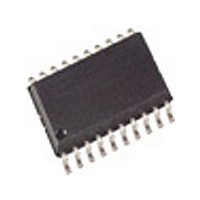T5743N-TG Atmel, T5743N-TG Datasheet - Page 8

T5743N-TG
Manufacturer Part Number
T5743N-TG
Description
Manufacturer
Atmel
Datasheet
1.T5743N-TG.pdf
(34 pages)
Specifications of T5743N-TG
Operating Frequency (max)
450000kHz
Operating Temperature (min)
-40C
Operating Temperature (max)
105C
Operating Temperature Classification
Industrial
Operating Supply Voltage (min)
4.5V
Operating Supply Voltage (typ)
5V
Operating Supply Voltage (max)
5.5V
Lead Free Status / Rohs Status
Not Compliant
Pin MODE can now be set in accordance with the desired
clock cycle T
relevant parameters:
D Timing of the polling circuit including bit check
D Timing of the analog and digital signal processing
D Timing of the register programming
D Frequency of the reset marker
D IF filter center frequency (f
Most applications are dominated by two transmission fre-
quencies: f
= 433.92 MHz in Europe. In order to ease the usage of all
T
tics display three conditions for each parameter.
D Application USA
D Application Europe
D Other applications
The clock cycle of some function blocks depends on the
selected baud-rate range (BR_Range) which is defined in
the OPMODE register. This clock cycle T
by the following formulas for further reference:
BR_Range = BR_Range0: T
Polling Mode
According to figure 10, the receiver stays in polling mode
in a continuous cycle of three different modes. In sleep
mode the signal processing circuitry is disabled for the
time period T
I
processing circuits are enabled and settled. In the follow-
ing bit-check mode, the incoming data stream is analyzed
bit by bit contra a valid transmitter signal. If no valid
T5743N
8 (34)
S
Clk
= I
(f
(f
(T
Pin MODE. The electrical characteristic is given as a
function of T
-dependent parameters on this electrical characteris-
XTO
XTO
Soff
Clk
. During the start-up period, T
is dependent on f
= 4.90625 MHz, MODE = L, T
= 6.76438 MHz, MODE = H, T
Send
Clk
BR_Range1: T
BR_Range2: T
BR_Range3: T
Sleep
= 315 MHz is mainly used in USA, f
. T
Clk
Clk
).
while consuming low current of
controls the following application-
XTO
XClk
XClk
XClk
XClk
and on the logical state of
IF0
)
= 8
= 4
= 2
= 1
Startup
Clk
T
T
T
T
Clk
XClk
Clk
Clk
Clk
Clk
= 2.0383 s)
= 2.0697 s)
, all signal
is defined
Send
signal is present, the receiver is set back to sleep mode af-
ter the period T
check as it is a statistical process. An average value for
T
T
The condition of the receiver is indicated on Pin IC_AC-
TIVE. The average current consumption in polling mode
is dependent on the duty cycle of the active mode and can
be calculated as:
I
During T
a transmitter signal. To guarantee the reception of a trans-
mitted command the transmitter must start the telegram
with an adequate preburst. The required length of the
preburst depends on the polling parameters T
T
(T
and the number of bits (N
The following formula indicates how to calculate the
preburst length.
T
Sleep Mode
The length of period T
Sleep of the OPMODE register, the extension factor
XSleep (according to table 9), and the basic clock cycle
T
T
In US- and European applications, the maximum value of
T
lution is about 2 ms in that case. The sleep time can be
extended to almost half a second by setting XSleep to 8.
XSleep can be set to 8 by bit XSleep
According to table 8, the highest register value of sleep
sets the receiver into a permanent sleep condition. The re-
ceiver remains in that condition until another value for
Sleep is programmed into the OPMODE register. This
function is desirable where several devices share a single
data line and may also be used for C polling – via Pin
POLLING/_ON, the receiver can be switched on and off.
Spoll
Bit-check
Startup
Startup
Preburst
Clk
Sleep
Sleep
Start, C
. It is calculated to be:
+
is about 60 ms if XSleep is set to 1. The time reso-
= Sleep
, T
and T
I
w T
Soff
). Thus, T
Sleep
is given in the electrical characteristics. During
Bit-check
Bit-check
Sleep
and T
T
T
Sleep
Sleep
Bit-check
X
and the start-up time of a connected C
+ T
Bit-check
Sleep
Startup
) I
) T
the current consumption is I
Startup
Sleep
Son
. This period varies check by
Bit-check
Startup
the receiver is not sensitive to
depends on the actual bit rate
1024
is defined by the 5-bit word
+ T
(T
) T
Bit-check
Startup
) to be tested.
Rev. A3, 17-Dec-01
Bitcheck
T
Std
) T
Clk
to’1’.
+ T
Bitcheck
Start_mC
)
S
= I
Sleep
Son
.
,














